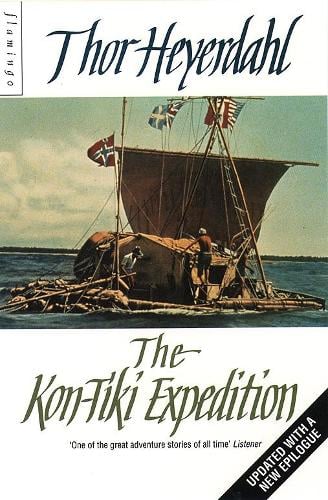
The rafts were constructed at Escuela Naval, a marine military school, on the SIMA naval base in Peru. The logs and poles are lashed together with 2 tonnes of rope. The rafts are constructed of 11 balsa logs that are 17 m long. You might also like: An acidic ocean may mean less fish. He also believes that those who crossed major ocean areas in early times sailed far faster than Heyerdahl’s expedition did, and that they could steer the boats. However, Kon-Tiki2’s expedition leader, Torgeir Sæverud Higraff, believes that traffic went both ways and wants to show that it is possible to sail round trip to Easter Island. He theorized that the South Americans might have used crafts that drifted with the winds and currents to Polynesia – and that it was virtually impossible to get back to their starting point. Heyerdahl also had a theory that Polynesia was populated by people who crossed the ocean from South America. On the original Kon-Tiki expedition, Heyerdahl wanted to show that it was possible to cross wide stretches of ocean on a simple, hand-built craft. The expedition chose this route, both to support but also to challenge Heyerdahl’s theories. 
Their destination is Easter Island, where the rafts will turn around and sail back to South America.

The expedition follows in the wake of Thor Heyerdahl’s 1947 Kon-Tiki expedition.īut Kon-Tiki2 is not sailing all the way to Polynesia like Heyerdahl did. On 7 November, the Kon-Tiki 2 expedition set out on a journey across the Pacific on two newly built balsa rafts, built at the SIMA naval base in Lima, Peru.

The Kon-Tiki2 expedition aims to both reinforce and challenge Heyerdahl’s theories – and NTNU will gather unique research material from the major oceans that the expedition crosses







 0 kommentar(er)
0 kommentar(er)
